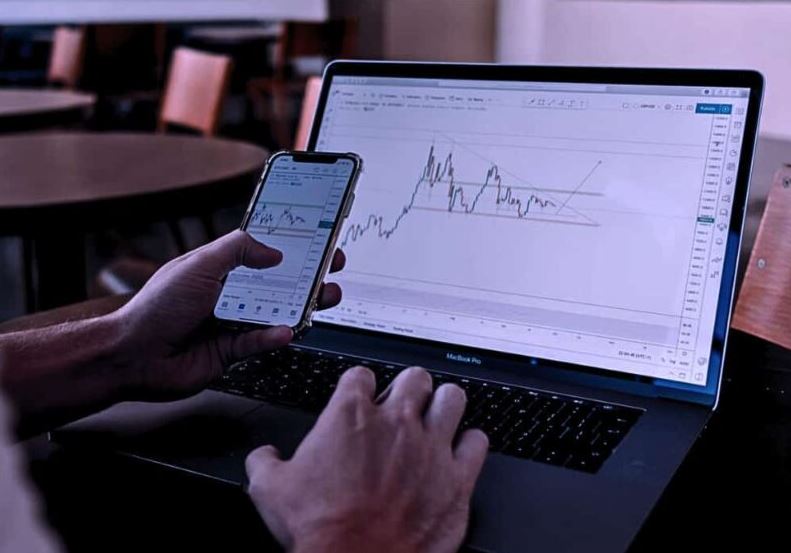In the ever-evolving world of financial markets, traders are constantly looking for ways to stay ahead of the curve. With technology making trading platforms more accessible, investors now have two major options: desktop trading and mobile trading. Both have their pros and cons, and choosing the right one can significantly impact your trading experience and outcomes. So, which method reigns supreme in the ongoing battle between desktop and mobile trading? Let’s break it down.

What is Desktop Trading?
Desktop trading refers to executing trades using a dedicated trading platform installed on a personal computer or laptop. It provides users with a more comprehensive setup, offering larger screens, multiple monitor capabilities, and powerful processing. This method is traditionally favored by professional traders and institutions due to its robust features and detailed charting capabilities.
The Pros of Desktop Trading
- Comprehensive Analytical Tools
One of the key advantages of desktop trading is the access to a wide range of advanced analytical tools. You can view multiple charts, analyze different assets, and conduct deep technical analysis with greater ease. These platforms often offer more advanced features compared to mobile apps, allowing traders to make more informed decisions. - Multiple Screens and Larger Displays
A larger screen gives traders the ability to see more data at once, which can be crucial when monitoring multiple assets or trading on different timeframes. Serious traders often set up multiple monitors, each dedicated to specific aspects of their trading strategy – charts, news feeds, order books, etc. - Better Stability and Performance
Trading on a desktop is generally more stable compared to mobile devices, as desktops have superior processing power and internet connectivity. This reduces the chances of lagging, which can be critical during high-frequency trading or times of market volatility.
The Cons of Desktop Trading
- Lack of Mobility
The obvious drawback of desktop trading is the lack of mobility. You’re tied to your desk, and stepping away means you could miss crucial opportunities. This limitation can be especially challenging for those who trade in volatile markets where timing is everything. - High Setup Costs
A proper desktop trading setup requires not just a computer but often multiple monitors, a stable internet connection, and possibly even special software. For beginner traders, this can be a significant investment.
What is Mobile Trading?
In contrast, mobile trading allows users to trade while on the move, using a smartphone or tablet. With most brokers offering mobile apps that sync with their desktop platforms, traders can access the markets anytime, anywhere. Mobile trading has surged in popularity due to its convenience, appealing especially to part-time traders and those who prefer to manage their investments on the move.
The Pros of Mobile Trading
- Unmatched Flexibility
Perhaps the greatest advantage of mobile trading is the flexibility it offers. You’re no longer confined to your desk or office. Whether you’re commuting, on vacation, or simply relaxing at home, you can make trades in real-time with just a few taps on your phone. - Ease of Use
Mobile trading platforms are generally built to be intuitive, featuring easy-to-use interfaces that make it straightforward for beginners to execute trades. Notifications and alerts also help users stay updated with market movements. - Cost-Effective
Unlike desktop trading, mobile trading doesn’t require expensive hardware. All you really need for mobile trading is a reliable smartphone and a good internet connection. This makes mobile trading more accessible to a wider audience, including those who are just starting out.

The Cons of Mobile Trading
- Limited Functionality
While mobile trading apps are improving, they still don’t offer the same level of functionality as desktop platforms. You may have access to fewer charting tools, limited screen space, and fewer customization options. For professional traders who rely heavily on technical analysis, this can be a significant disadvantage. - Increased Distractions
Trading on a mobile device can expose you to distractions. It’s easy to get sidetracked by social media, messages, or phone calls, which can be detrimental during critical trading moments. Moreover, the smaller screen on mobile devices can make it harder to concentrate on crucial data. - Potential for Connectivity Issues
Mobile devices are more prone to connectivity issues, especially if you’re in a location with poor signal strength or using public Wi-Fi. A sudden drop in connection during a trade can lead to missed opportunities or unexpected losses.
Which Method Should You Choose?
Ultimately, the choice between desktop trading and mobile trading boils down to your personal trading style and preferences. If you’re a professional trader or someone who relies on detailed technical analysis, desktop trading is likely your best option. The stability, larger screens, and advanced tools will offer a more robust trading experience.
On the other hand, if you’re a casual trader who values flexibility and convenience, mobile trading might be the better choice. You’ll be able to keep an eye on the markets wherever you are, without the need for a dedicated setup. Just keep in mind the limitations in terms of tools and screen size.
A Hybrid Approach: The Best of Both Worlds?
Many traders today opt for a hybrid approach, using both desktop and mobile platforms depending on their situation. For instance, they might do their detailed analysis and setup trades on their desktop but use mobile apps to monitor positions and make quick trades while away from their desk. This offers the flexibility of mobile trading without sacrificing the depth and functionality of desktop platforms.
Conclusion
So, which trading method reigns supreme? The answer isn’t a clear-cut one. Desktop trading offers a more comprehensive and stable trading experience, perfect for professionals who need access to advanced tools and large amounts of data. Meanwhile, mobile trading shines in its flexibility and convenience, ideal for those who are always on the move.


